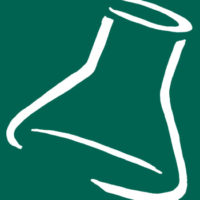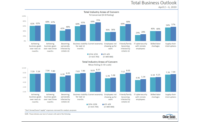Since bovine spongiform encephalopathy (BSE) was first diagnosed in cattle in the United Kingdom in 1986, there have been extensive reports, reviews and original scientific and research-oriented papers on the disease and the other transmissible spongiform encephalopathies (TSEs), or prion, diseases. All of these contributions have been invaluable to the enhancement of knowledge and the concurrent impact these enigmatic diseases have had on the global community, including world trade.[1] Early epidemiological indicators provided supporting evidence that BSE is a feed-borne infection linked to contaminated meat and bone meal (MBM) of ruminant origin. There still is uncertainty about the genesis of the disease and the origin of the infection. Speculation is that it could have a link to scrapie in sheep, a genetic mutation in cattle, or possibly a transmissible spongiform encephalopathy from another mammalian species.[2]
The announcement by Canadian agricultural authorities on May 20, 2003, that an Alberta cow had been initially diagnosed and subsequently confirmed with BSE established a new sense of urgency throughout North America, and amplified the concerns of whether or not a case was imminent or likely in the U.S., and what the implications and consequences could be to the cattle/beef industries and consumer reaction, including the inferences for trade and human health. This state of uncertainty changed based on an announcement made by U.S. Department of Agriculture (USDA) Secretary Ann Veneman on Dec. 23, 2003, that a case of BSE was confirmed in Washington State. Subsequent investigations determined that the animal originated from Canada. Nonetheless, the incident took place in the U.S. and it was difficult to completely decouple the circumstances, because of the two countries’ trading practices. This created a new sense of urgency in the nation and a thorough re-examination of current policies to fully assess our ongoing programs of testing and surveillance to determine whether or not modifications were needed.
Surveilling BSE
It is impossible to discuss BSE and other TSEs without being conscious of the challenging unknowns associated with this complex group of diseases.[3] Collectively, we still are trying to understand the biology of these diseases because they are unlike any other disease and hold the promise of revolutionizing the way in which we examine some of the basic mechanisms of infectious diseases and of infection. The acceptance should be that an outbreak of BSE always remains a possibility, contextual to the theory that anything is possible. There are logical reasons, however, why the disease has not been diagnosed in the country to date in indigenous cattle, and if diagnosed, will have limited capability to transmit, amplify or contribute to a public health problem through the genesis of variant Creutzfeldt-Jakob disease (vCJD) in humans.
Since 1986, several policy and regulatory actions have been taken in the U.S. to address the BSE challenge. Within 10 days of the confirmatory diagnosis of BSE in the U.K. in November 1986, the disease in the U.S. became a legally reported disease under Title 9, Code of Federal Regulations (CFR), Parts 161 and 71, making the U.S. the first country in the world to take immediate action by recognizing the potential threat to animal health.[4]
In 1988, USDA, serving as the organizing facilitator, established a BSE standing committee of subject matter experts from government agencies, academia, the research community and industry representatives to regularly review the published literature, discuss the science, invite experts, and examine the prevailing epidemiology in the U.K. and further suggest appropriate regulatory measures to preclude the likely entrance of the infectious agent of BSE from entering the country. In essence, in the U.S., we were developing strategies to be proactive in the protection of animal health early in the process, while our scientists at the National Institute of Health (NIH) and the Centers for Disease Control and Prevention (CDC) began to look at the public health inferences and started early collaboration/communication with British researchers. This is the added value of a technologically advanced society. We had the resources to act and contrary to the critics, we acted early and responsibly.
In 1989, the U.S. banned importation of all ruminants, bovine semen, embryos and MBM from the U.K., based on the evolving epidemiology of potential risk factors. In the same year, the U.S. established policies for the submission of tissues from BSE “suspect” cases for laboratory diagnosis, including field cases of cattle exhibiting signs of neurological disease, cattle condemned at slaughter for neurological reasons, rabies-negative cattle submitted to public health laboratories, and aged cattle that are not ambulatory at slaughter (“downer” cattle).
The following year, USDA began a BSE educational outreach program to educate veterinary practitioners, veterinary laboratory diagnosticians, industry and producers about the pathology and clinical manifestations of the disease. The agency also instituted an active BSE surveillance program, including histo-pathological examinations of brains of high-risk cattle, and initiated a traceback program of cattle imported from the U.K. The U.S. Food and Drug Administration (FDA) established a BSE task force with initial discussions of product inventories and guidance letters to the regulated industry on products of bovine origin.
From 1991 through 1994, both agenices continued to actively work on BSE policy and regulations. During this time, USDA conducted a BSE risk analysis and enacted formal regulations to prohibit the importation of most ruminant products from any country known to have BSE. FDA issued an import bulletin alerting field units to imports from BSE countries of animal by-products and regulated products with animal by-product ingredients. USDA conducted an extensive reassessment and updated the 1991 risk analysis to address emerging epidemiologic inferences, and it expanded its diagnostic testing policy to include supplemental tests for abnormal prion proteins that are indicative of the infectious agent of BSE, immunohistochemistry (IHC).
In 1996, USDA conducted another analysis of BSE to reflect currency and reviewed the initial findings of analyses done in 1991 and 1993 to determine the degree of existing risk. USDA and the Public Health Service issued a press release supporting voluntary industry efforts to keep the U.S. free of BSE. This was based on a March 20, 1996, British government announcement of 10 cases of a previously unrecognized form of CJD and their possible relationship to BSE. FDA issued an Advanced Notice of Proposed Rulemaking, soliciting comments on use of protein derived from ruminants in ruminant feed on May 14, 1996.
The following year, USDA prohibited importation of live animals and most ruminant products from throughout Europe. In addition, FDA/CVM published a final rule, Substances Prohibited from Use in Animal Food or Feed: Animal Proteins Prohibited in Ruminant Feed. The rule, 21 CFR part 589, became effective Aug. 4, 1997.
In 1998, USDA entered into a cooperative agreement with Harvard University to analyze and evaluate the effectiveness of the department’s prevention and control strategies and determine whether the current policies instituted were adequate to preclude the potential for the infectious agent of BSE to be transmitted through feed to cattle. The study would also assess the likelihood of a disease outbreak that could ultimately affect human health.
Between 1999 and 2000, USDA enhanced the surveillance program of non-ambulatory cattle (“downers”) and increased the sampling regimen of brain submissions that was five times over the recommended criterion of the International Organization of Epizooties (OIE). In 2000, USDA’s Animal and Plant Health Inspection Service (APHIS) prohibited the import of rendered animal proteins from Europe.[4]
Some significant reports on the incidence of BSE were issued in 2000 and 2001. The General Accounting Office (GAO) published a comprehensive report on food safety in September 2000, in which it stated: “With respect to BSE in the U.S. health officials have not identified any illness in livestock or in humans caused by this disease.”[5] The Council for Agricultural Science & Technology (CAST) published a detailed analysis/ assessment of TSEs in the U.S. in October of that year, declaring in the interpretive summary: “BSE has never been detected in the U.S. The overall risk for the occurrence is extremely low.”[6] The Harvard Center for Risk Analysis, in collaboration with Tuskegee University scientists, reported on Nov. 26, 2001, their comprehensive findings of the evaluation of the potential for bovine spongiform encephalopathy in the U.S., using a probabilistic simulation model to help characterize the consequences of introducing BSE into the U.S. using various means and concluded that “the U.S. is highly resistant to any introduction of BSE or a similar disease. BSE is extremely unlikely to become established in the U.S.”[7] The Harvard/Tuskegee study is without doubt the most comprehensive risk analysis (using 1,000 mathematical variables) of a potentially zoonotic disease that I have read in my 40 years’ association with veterinary public health and food safety. It covered every potential aspect/concept of risk and could be considered a standard to emulate in assessing risk.
Assessing the Risk Factors
Until the advent of BSE, the rendering industry historically operated on the assumption that the time-temperatures of the rendering systems used inactivated nearly all pathogens that could impact product safety of the finished feed ingredients (animal protein meals). Using Bacillus anthracis, the cause of anthrax, this was validated as early as 1935 in work done by microbiologists at Cook College of Rutgers University.[8]
While a product of the rendering stream, MBM was linked epidemiologically as the most likely causal association to BSE. This theory is yet to be finitely validated, but the cumulative data is compellingly convincing that indeed, MBM, most likely of ruminant origin, is a distinct part of the pathogenesis of the disease, and at a minimum, at least a co-factor in the cause.
Inactivation research studies were not state-of-the-art, but were nonetheless valiant attempts to simulate rendering conditions to determine the time and temperature needed to minimize or inactivate the prion. It was found that no range of rendering temperatures would ever fully inactivate the infectious prion. This was further supported by the Phillips Commission, which postured that rendering processes had nothing to do with the transmission of BSE since the temperatures and time of the process have no impact on the infectious agent, even though research clearly demonstrated that rendering contributed to varying degrees of minimizing the levels of infectivity.[9] The Phillips Commission further stated that the sheep scrapie analogy to risk of the BSE outbreak was fallacious, and that the other inference—the use of solvents—played, at best, a very minimal or no role in the genesis of the disease.
To date, scientists have assessed the following risk factors related to BSE:
• The consumption of MBM by cattle.
• The importance of cattle and MBM that are potentially infected or contaminated by the infectious agent of BSE.
• The livestock population structure.
• The rendering processes.
• The animal feeding practices
Tissues of particular risk are shown in Table 1. As illustrate, an oral infectious dose (ID) of 50%, or ID (50), indicates that the oral dosage at which 50% of challenged cattle would become infected, where infection means replication of the BSE agent. The ID (50) is expressed as the product of the titre ID (50)/g of tissue ingested by cattle and the amount of tissue (g). It is estimated that, in a clinical case of BSE, about 8,000 cattle oral ID (50) of infectivity are present in the carcass. The percentage of the total infectivity and the number of cattle oral ID (50) in a 1,200 lb. animal (clinical case), is represented by the various tissues mentioned.[10]
The State of BSE Risk Management, Post-December 2003
The most important measures in risk management are the detection (surveillance) and elimination of infected cattle before slaughter through a strong testing regimen; adequate processing of animal waste including controls to prevent comingling and cross-contamination; the ban on feeding MBM of ruminant origin to ruminants; and restrictions on imports from known affected countries. While these basics are accepted universally as a rationale guide for prevention and control of BSE, and elements of these have been practiced for more than a decade in this country, the Dec. 23, 2003, announcement necessitated that new policies/regulations be established to reflect the current situation.
Within a couple of weeks of the confirmation of BSE in the country, the USDA’s Food Safety and Inspection Service (FSIS) announced three interim final rules to further protect the meat supply and human health against potentially contaminated risk material with the infectious agent of BSE. The actions include: designating certain high-risk tissues as specified risk materials (SRMs) and prohibiting the use of such for human food; requiring the condemnation of non-ambulatory (“downer” cattle) presented for slaughter from the human food chain; not awarding the mark of inspection on cattle tested for BSE under APHIS’ surveillance program until the test results are received and the results are BSE negative; ensuring that advanced meat recovery (AMR) systems do not process SRMs and that boneless “meat” does not contain central nervous system (CNS) tissues or excess levels of bone solids and bone marrow; and prohibiting the use of certain stunning methods.[11]
FDA plans to soon publish an interim final rule that will address four specific proposed changes:
• Require dedicated equipment, facilities or production lines for manufacturing non-ruminant animal feed if they also manufacture products for cattle or other ruminants;
• Prohibit the use of bovine-derived blood and blood products in feed for ruminants;
• Ban the use of poultry litter as a feed ingredient for ruminants;
• Prohibit the use of restaurant plate waste as a feed ingredient for ruminants.
As both the USDA, FSIS and FDA institute programs to protect animal and human health through corrective feed/food processing and consumption measures, USDA APHIS is developing a national BSE surveillance system with a goal to obtain as many samples as possible from a targeted high-risk population during a 12- to 18-month period starting on June 1, 2004. This program is a one-time effort to determine at what level BSE is present in the U.S. cattle population, and will conform to a confidence level of detection for testing at either 95% confidence of detection at a prevalence rate of 1/10 million adult cattle, assuming all positives are in high-risk populations. Another option is at a 99% confidence that the disease has been detected in 1/10 million cattle. Both objectives will use different total samples. At the 95% confidence level, a total of 201,000 samples will be required; at the 99% confidence level, 268,500 samples will be needed.
Risk communication is a complicated process, and for a complex disease like BSE, it is likely as complicated as doing an assessment of the dimensions of the risks being considered.[12] This dilemma remains a distinct challenge both for the cattle and beef processing industries and the government agencies that regulate those industries, because historically, more questions than answers are generated about this disease. Nonetheless, even though the challenge is defying, the need to communicate and explain unfamiliar topics, associated with varying degrees of uncertainty, for which the average person is poorly informed, remains a mandate.
Transparency and Communication Key to Successful Efforts
During the Washington State BSE incident, the government did an excellent job in communicating with the press and allied industries on the chronology of events on an as-needed basis. The briefings heightened transparency and amplified the core information necessary to keep the media and public fully informed, including the actions taken and anticipated proposals for prevention and control of the disease. U.S. Secretary of Agriculture Ann Veneman played an active role in all the briefing proceedings, along with her technical support staff, certifying in all her comments the thematic message that beef produced in the U.S. is safe.
The comfort to beef producers and processors, in the midst of an acute crisis caused by the BSE incident, was that the government did not overreact. This set the stage and, indeed opportunity, for the producing industries to mimic the government in communicating risk messages and assist in the resolutions.
Interestingly, America’s beef consumers did not panic, and demonstrated composure and a comparative level of trust domestically. As customary, every outbreak of BSE in a country is followed by international prohibitions, and the country’s representatives are still sticking to the positive message of the safety of the U.S. beef supply, while pleading for the re-opening of markets and trade.
The ideal remains that transparency and communication, including education as applicable, is the path to take in defining and reporting risks, regardless of the associated variables and the complexity of the involved risk. BSE is a challenge, but should be treated in like manner to other efforts that address risk in the food supply and the protection of animal and human health.
Of course, many challenging questions about BSE risk remain. For example, are there strains of the BSE agent as suggested by the occurrence of atypical cases that have been reported in younger animals in Japan, Italy and France? What impact will this have on future policies and the occurrence of the disease globally? What about cases born after the reinforced ban (BARB) that appear to be in excess of what would be normally anticipated with lack of compliance? Wilesmith of the U.K. has suggested that the marked change in geographical distribution that the risk of infection was not consistent with previous suspect feed sources. Could environmental contamination play a role in the spread of BSE? And there are several more questions: How can the government coordinate the non-ambulatory testing objectives to maximize and ascertain that at risk animals are properly sampled and optimize the surveillance initiative, and not be diverted to a disposal option that lacks elements of biosecurity? Can BSE occur sporadically in same manner as classical CJD in humans at an approximate ratio of 1 in 1,000,000? Can a rapid test using an easy to process tissue like blood ever approximate the “gold standard” for use and approval? How can we educate the public to appreciate risk contextual to BSE and understand that the Armageddon projections of some activists in the U.K. forecasting deaths varying from 500,000 to as many as 10 million are hyper-sensational, and do not reflect the true global incidence of the disease, which has averaged about 17 deaths per year throughout the world? Can risk be ever treated with logic?
It is in the best long-term interest of animal agriculture to coalesce and support rules that will preclude the transmission and amplification of BSE in the country by maximizing the use of science, while accepting the fact that with complex diseases like the TSEs, and specifically BSE, levels of sound preventive controls are necessary pending the unanswered concerns of aspects/concepts of the disease. The U.S. government is challenged as a result of the Dec. 23, 2003, confirmation of BSE in Mabton, WA. This challenge has also filtered down to several regulatory agencies, animal agriculture, predominantly the cattle and beef producing sectors, the rendering and feed industries, and the public at large. The impact will be in the details that evolve from the regulatory agencies and the requirements imposed on the regulated industries. The government regulatory initiatives will be accomplished by rules originating from the FDA and USDA FSIS and APHIS. The objective is to establish safeguards based on risk that are adequate, supported by science, and will assure that beef and by-products are safe.
Don A. Franco, DVM, MPH, DACVPM, is president of the Center for Bio-security, Food Safety and Public Health (CBFSPH) based in Lake Worth, FL. Board-certified by the American College of Veterinary Preventive Medicine, Franco spent most of his professional career with the USDA FSIS, most recently as Director of Slaughter Operations in Washington, DC, from which he retired in 1992. Dr. Franco was recognized by USDA in 1990 with a Superior Service Award for “notable authorship which has brought national and international recognition to the USDA FSIS.” From 1992 to 2002, he served as the vice president of scientific services with the National Renderers Assoc-iation, and as president of the Animal Protein Producers Industry.
References
1. Lasmezas, C.I. and D. Adams. Introduction: Risk analysis of prion diseases in animals. World Organization for Animal Health. Rev. Sci. Tech. Off.Int.Epiz., 22 (1), 13-18. 2003.
2. Prince, M.J., et al. Bovine spongiform encephalopathy. World Organization for Animal Health. Rev. Sci. Tech. Off.Int.Epiz., 22 (1), 37-60. 2003.
3. Franco, D.A. Retrospective assessment of BSE provides insight. Feedstuffs, 74(36). Sept. 2, 2002.
4. Franco, D.A. Controls in place to prevent transmission of BSE. Feedstuffs, 73(7). Feb. 12, 2001.
5. U.S. General Accounting Office. Food Safety: Controls Can be Strengthened to Reduce the Risk of Disease Linked to Unsafe Animal Feed. GAO/RCED-00-2355. September 2000, pp. 8-9.
6. Council for Agricultural Science & Technology. Transmissible Spongiform Encephalopathies in the United States. Task Force Report, No. 136. October 2000,
pp. 5-6.
7. Harvard Center for Risk Analysis and Center for Computational Epidemiology/Tuskegee University. Evaluation of the Potential for Bovine Spongiform Encephalopathy in the United States. November 26, 2001, p. i.
8. Franco, D.A. The Principles of Sanitation, in Sanitation and Hygiene in the Production of Rendered Animal By-Products. APPI, FPRF and NRA Publication, pp. 3-4. 1997.
9. The Phillips Commission. Executive Summary and Report of the BSE Inquiry in the United Kingdom. Volumes 1 and 2. The Stationary Office, London. 2000.
10. Morley, R.S., S. Chen and N. Rheault. Assessment of the risk factors related to bovine spongiform encepahlopathy. World Organization for Animal Health. Rev. Sci. Tech. Off.Int.Epiz., 22 (1), pp. 157-178. 2003.
11. Federal Register. Vol. 69, No 7. Jan. 12, 2004.
12. Fischoff, B., A. Bostrom and M.J. Quadrel. Risk perception and communication. In: Oxford Textbook of Public Health. R. Detels, W.W. Holland, J. McEwen and G.S. Omenn, eds. Oxford University Press, New York, NY. Volume 2, pp. 987-1002. 1997.
BSE and the Safety of Beef: A Perspective




